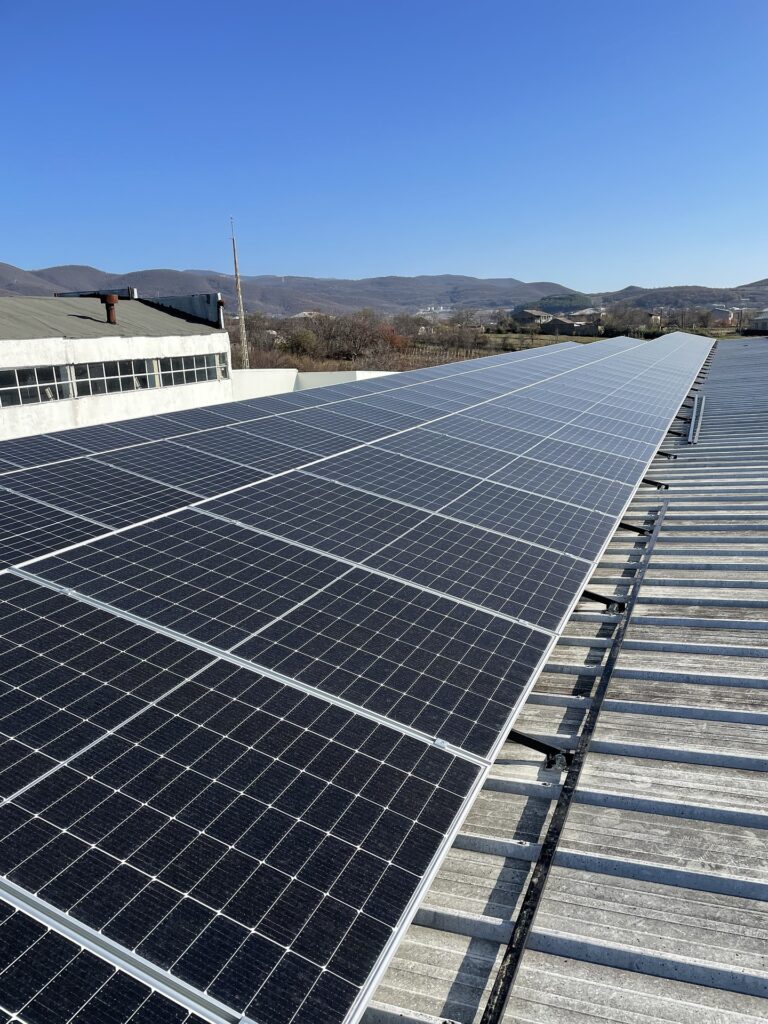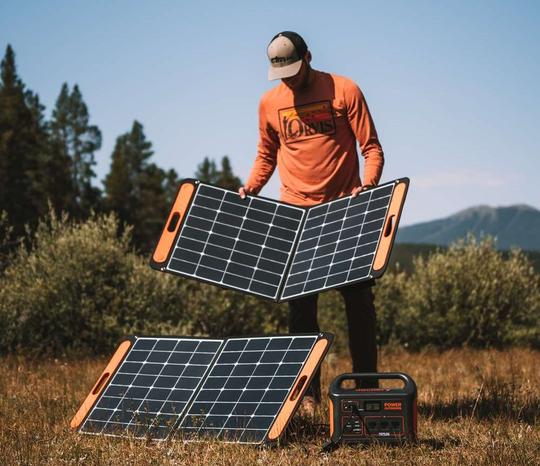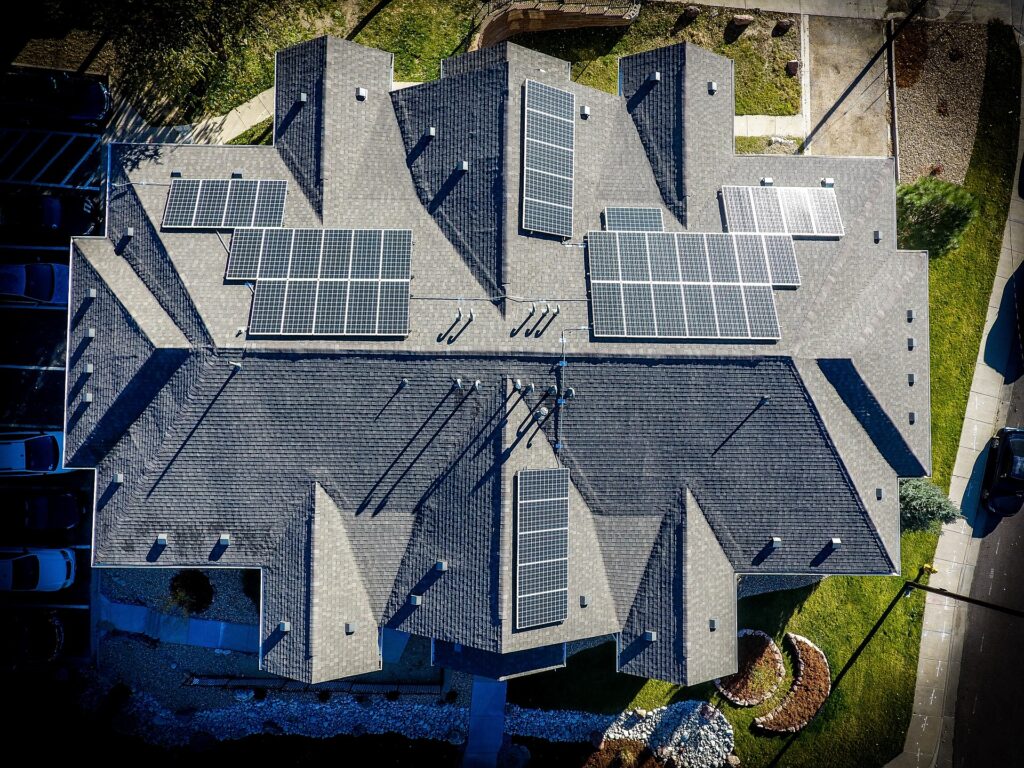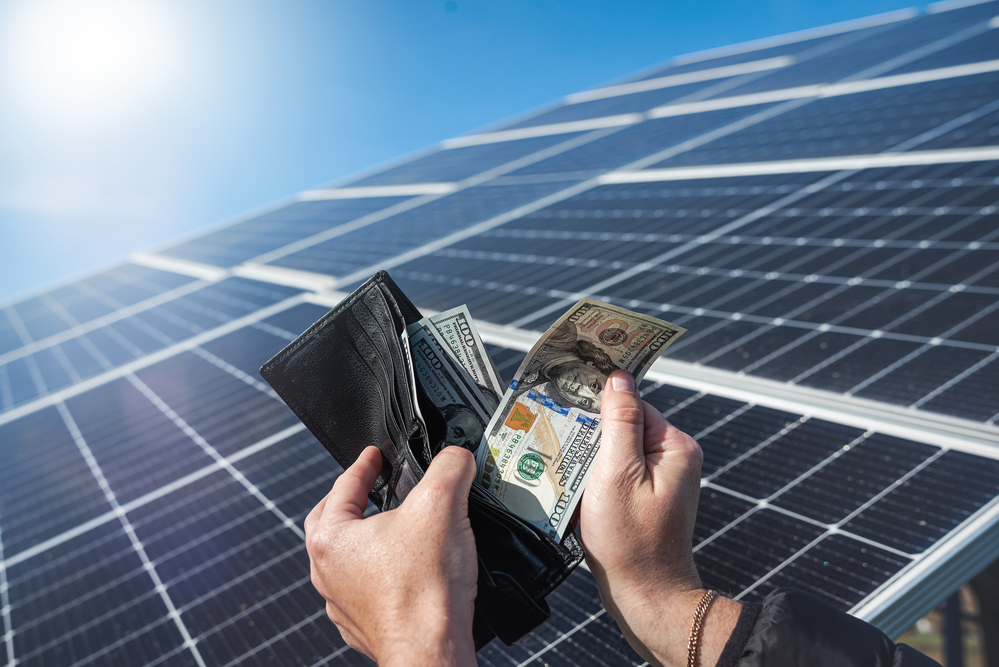Yes, Solar Panel installation can be Expensive initially, but it can save money in the long run. Solar panels require an upfront investment, but they can significantly reduce or eliminate monthly electricity bills and provide a return on investment over time.
With advancements in technology and government incentives, the cost of solar panels has decreased, making them a more affordable option for many homeowners and businesses. Investing in solar panels not only provides financial benefits but also contributes to a more sustainable and environmentally friendly future.
The shift towards renewable energy sources has prompted many homeowners and businesses to consider installing solar panels. While the benefits of solar energy—such as reduced electricity bills and a lower carbon footprint—are clear, the cost of installation remains a significant consideration. Solar panel installation can be perceived as expensive due to the upfront investment required. However, various factors, including government incentives, financing options, and long-term savings, play a crucial role in determining the overall financial impact. This guide explores the costs associated with solar panel installation, the factors influencing these costs, and the potential financial benefits over time, providing a comprehensive understanding for those considering making the switch to solar energy.

The upfront cost of installing solar panels can indeed be quite high. However, it’s essential to consider the long-term benefits and savings they provide. While you may have to make a significant investment initially, solar panels can significantly reduce your electricity bills over time. Additionally, there are often government incentives, tax credits, and financing options available to help offset the initial cost and make solar energy more accessible to homeowners and businesses. Plus, as technology advances and demand increases, the cost of solar panels has been gradually decreasing, making them a more financially viable option for many people.
Solar Panel installation can be Expensive initially
While the initial cost of solar panel installation can be a barrier for many individuals and businesses, it’s important to consider the broader picture and the numerous benefits that solar energy offers.
- Long-term Savings: While the upfront investment may seem daunting, solar panels can lead to significant savings on electricity bills over their lifespan. Once installed, solar panels generate electricity from sunlight, reducing or even eliminating the need to purchase electricity from the grid. This can result in substantial long-term savings on utility bills, potentially offsetting the initial cost of installation within a few years.
- Return on Investment (ROI): Solar panels are often viewed as an investment rather than an expense. Over time, the energy savings they provide can generate a considerable return on investment. In many cases, the ROI for solar panel installations is competitive with or even superior to other financial investments.
- Government Incentives and Tax Credits: Many governments offer incentives and tax credits to encourage the adoption of solar energy. These incentives can significantly reduce the upfront cost of installation, making solar panels more affordable for homeowners and businesses. Examples include federal investment tax credits (ITC) in the United States and feed-in tariffs in various countries.
- Financing Options: Financing options such as solar loans, leases, and power purchase agreements (PPAs) make solar panel installations more accessible by spreading out the cost over time or allowing homeowners to pay for electricity generated by the solar panels rather than the panels themselves. These financing arrangements often require little to no money down, making solar energy accessible to a broader range of consumers.
- Rising Energy Costs: As energy costs continue to rise, the savings provided by solar panels become increasingly valuable. By generating their electricity, solar panel owners can protect themselves against future increases in utility rates, providing stability and predictability in energy costs for years to come.
- Environmental Benefits: In addition to financial savings, solar energy offers significant environmental benefits by reducing greenhouse gas emissions and dependence on fossil fuels. By investing in solar panels, individuals and businesses can contribute to a cleaner, more sustainable energy future.

The Cost Of Solar Panels
Solar panels have gained immense popularity in recent years as a sustainable and eco-friendly energy solution. However, many people are still skeptical about investing in solar panels due to concerns about the initial cost. Let’s take a closer look at the cost of solar panels and explore the financial aspects of this renewable energy source.
Initial Installation Costs
The initial installation cost of solar panels can vary depending on various factors such as the size of the system, the complexity of the installation, and the location of your property. On average, the cost of installing solar panels ranges from $10,000 to $30,000 for a typical residential setup. While this may seem like a significant investment, it’s important to consider the long-term savings that solar panels offer.
| Types of Costs | Estimated Costs |
|---|---|
| Solar Panels | $5,000 to $15,000 |
| Inverters | $1,000 to $3,000 |
| Batteries | $3,000 to $8,000 |
| Installation | $1,000 to $4,000 |
Long-term Savings
One of the key advantages of solar panels is the long-term savings they provide on your energy bills. By harnessing the power of the sun, you can significantly reduce or even eliminate your dependence on traditional energy sources. This means lower monthly electricity bills, especially as solar technology becomes more efficient and affordable. Over time, these savings can add up to thousands of dollars, allowing you to recoup your initial investment.
Return On Investment
Calculating the return on investment (ROI) for solar panels involves considering several factors, such as the cost of the system, the amount of energy generated, and the cost of electricity in your area. On average, homeowners can expect to recover their investment in solar panels within 5 to 10 years. After that, the electricity generated by your solar panels will be virtually free, allowing you to enjoy substantial savings for decades to come.
In addition to the financial benefits, installing solar panels also offers environmental advantages, reducing your carbon footprint and contributing to a cleaner and greener planet. So, while the upfront cost of solar panels may seem significant, the long-term savings and positive environmental impact make it a wise investment for those looking to embrace sustainable energy solutions.
Factors Affecting Solar Panel Costs
Solar panel costs are determined by several factors such as the type and size of the system, installation expenses, and government incentives. Though initially expensive, solar panels can provide long-term savings and a sustainable energy source for homeowners.
Factors Affecting Solar Panel Costs
When considering the investment in solar panels, there are several factors that can influence the overall cost. Understanding these factors can help in making informed decisions and effectively managing the expense. Let’s delve into the significant factors affecting solar panel costs.
Location
The geographic location plays a pivotal role in determining the cost of solar panels. Sunlight availability and local regulations are essential elements to consider. Areas with more sunlight typically require fewer panels, thus reducing costs.
System Size
The size of the solar panel system also affects its cost. A larger system generally requires a higher investment. However, it is important to consider the long-term benefits in terms of energy production and potential savings.
Quality of Panels
The quality of solar panels is directly linked to their cost. High-quality panels might come with a higher price tag. Still, they usually yield better performance and durability, leading to long-term savings.
Incentives and Rebates
Various incentives and rebates offered by governments and utility companies can significantly decrease the upfront cost of solar panel installation. These incentives can make solar panels more affordable and cost-effective for homeowners and businesses.
By understanding these factors, individuals can make well-informed decisions when considering the cost of solar panels, thus reaping the long-term benefits of sustainable and cost-efficient energy solutions.
Comparing Solar Panel Costs
The cost of solar panels is a crucial consideration for those looking to invest in renewable energy for their homes or businesses. By comparing solar panel costs, individuals can make informed decisions regarding this sustainable investment. In this section, we will explore the varying costs associated with solar panels, including a comparison of different types of panels, the costs of solar versus traditional energy sources, and a look at costs over time.
Comparing Different Types Of Panels
When considering the cost of solar panels, it’s essential to examine the various types available in the market. Monocrystalline, polycrystalline, and thin-film solar panels all come with different price tags and efficiency levels. While monocrystalline panels tend to be more expensive due to their higher efficiency, thin-film panels offer a more budget-friendly alternative.
Costs Of Solar Vs. Traditional Energy Sources
The upfront cost of installing a solar panel system may seem daunting, but when comparing it to the long-term expenses of traditional energy sources, the benefits become evident. Solar panels provide a sustainable and cost-effective alternative to reliance on fossil fuels and grid electricity. Furthermore, with the availability of various financing options and incentives, the initial investment in solar panels can be significantly offset.
Comparing Costs Over Time
One of the most compelling aspects of solar panel costs is the consideration of long-term savings. Over time, solar panels prove to be a wise investment, with reduced energy bills and potential revenue from selling excess energy back to the grid. By factoring in the lifespan of solar panels and the continuous rise in electricity costs, the economic benefits of this sustainable energy solution become increasingly apparent.
Ways To Reduce Solar Panel Costs
Reducing the costs associated with solar panel installation can make this renewable energy source more accessible to a broader range of people. Here are several strategies to help decrease the upfront expenses:
-
Government Incentives and Tax Credits: Take advantage of government incentives and tax credits available in your area. These can significantly reduce the initial cost of solar panel installation. Research federal, state/provincial, and local incentives to see what options are available to you.
-
Competitive Bidding: Obtain quotes from multiple solar panel installation companies to ensure you’re getting the best price. Compare the costs, warranties, and reputation of each company to make an informed decision.
-
Group Purchasing: Consider joining or forming a group purchasing initiative with neighbors or community members. Buying solar panels in bulk can often result in discounted prices from suppliers and installers.
-
DIY Installation: If you have the skills and knowledge, consider installing solar panels yourself. DIY solar panel kits are available, but be sure to research local regulations, obtain necessary permits, and follow safety guidelines.
-
Energy Efficiency Improvements: Before installing solar panels, make your home or business as energy-efficient as possible. This can reduce the number of panels needed and lower overall installation costs. Simple measures like improving insulation, sealing air leaks, and upgrading to energy-efficient appliances can make a significant difference.
-
Flexible Financing Options: Explore financing options such as solar loans, leases, and power purchase agreements (PPAs). These arrangements allow you to spread out the cost of solar panel installation over time or pay for the electricity generated by the panels rather than the panels themselves. Look for low-interest loans or leases with favorable terms.
-
Consider Different Panel Types: Compare different types of solar panels (e.g., monocrystalline, polycrystalline, thin-film) to find the most cost-effective option for your needs. While some panels may have a higher upfront cost, they may also be more efficient and have a shorter payback period.
-
Negotiate Installation Costs: Don’t be afraid to negotiate with solar panel installers. Ask if there are any discounts or promotions available, especially if you’re willing to install during the off-peak season or purchase additional services such as maintenance packages.
-
Shop for Components: Research and shop around for the best prices on solar panel components such as inverters, mounting hardware, and wiring. Purchasing these items separately from reputable suppliers can sometimes result in cost savings compared to bundled packages offered by installers.
-
Monitor and Maintain: Proper maintenance and monitoring of your solar panel system can help maximize its efficiency and lifespan, reducing long-term costs. Regularly clean panels, inspect for damage, and ensure proper operation of all components.
Installing solar panels is a smart investment that can save you money on your energy bills in the long run. However, the upfront costs of solar panel installation can sometimes be a barrier for homeowners. Fortunately, there are several ways to reduce solar panel costs and make the transition to clean energy more affordable.
Leasing Options
Leasing an solar panel systems is becoming an increasingly popular option for homeowners who want to reduce their upfront costs. With a solar panel lease, you can enjoy the benefits of solar energy without the large initial investment. Instead of purchasing the system outright, you agree to pay a monthly lease fee to the solar panel provider. This arrangement allows you to start saving on your energy bills immediately, while the provider typically takes care of maintenance and repairs.
Financing And Loan Programs
If you prefer to own your solar panel system, there are various financing and loan programs available to help reduce your costs. Many solar panel companies offer financing options that allow you to spread out the payments over time. Additionally, there are federal and state loan programs specifically designed to assist homeowners in funding their solar panel installations. These programs often offer favorable interest rates and repayment terms, making it even more affordable to go solar.
Diy Installation
For the more adventurous homeowners, one way to reduce solar panel costs is to consider DIY installation. While this option may not be suitable for everyone, if you have the necessary knowledge and skills, you can save money by installing the solar panels yourself. Keep in mind that DIY installation requires careful planning, proper permits, and compliance with local regulations. However, with the right guidance and research, you may be able to significantly lower your upfront costs.
Federal And State Tax Incentives
Another way to reduce solar panel costs is by taking advantage of federal and state tax incentives. The government offers tax credits and incentives to encourage the use of renewable energy sources like solar power. These incentives can significantly offset the initial investment and make solar panel installation more affordable. It’s important to research the specific tax credits and incentives available in your area and consult with a tax professional to ensure you take full advantage of these savings.
Cost Vs. Environmental Benefits
Solar panels are a crucial investment with long-term environmental benefits, despite the initial cost. While the initial investment may seem high, considering the long-term savings and positive impact on the environment, the cost of solar panels is justified. The expenses are offset by reduced energy bills and potential tax incentives.
When considering solar panels, one of the main aspects that people often ponder is the cost versus the environmental benefits. Is it worth investing a significant amount of money upfront for solar panels when there are cheaper alternatives available? In this section, we will explore the various factors involved and shed light on the value that solar panels bring in terms of reducing energy bills, lowering carbon footprint, and contributing to a sustainable future.
Reducing Energy Bills
Solar panels offer an incredible advantage when it comes to reducing energy bills. By harnessing the power of the sun, these panels generate electricity that can be used to power your home or business. This means that you will be less reliant on traditional energy sources like the grid, resulting in substantial savings on your monthly utility bills. The money saved from lower energy bills can quickly offset the initial cost of installing solar panels, making them a cost-effective choice in the long run.
Lowering Carbon Footprint
In today’s world, where climate change is a serious concern, it’s essential to find ways to lower our carbon footprint. Solar panels offer a clean and renewable source of energy, unlike fossil fuels that release harmful greenhouse gases into the atmosphere. By switching to solar energy, you actively contribute to mitigating climate change and reducing air pollution. Each kilowatt-hour of solar energy generated eliminates the need for energy produced by burning fossil fuels, further benefiting the environment and our health.
Contributing To A Sustainable Future
Investing in solar panels is not just about the present; it’s about securing a sustainable future for ourselves and the generations to come. With the world’s finite resources dwindling, there is an urgent need to adopt sustainable practices. Solar panels play a pivotal role in this transition by harnessing the unlimited power of the sun, a source of energy that will not run out anytime soon. By embracing solar technology, we take a proactive step towards reducing our dependency on fossil fuels, promoting energy independence, and building a greener and more sustainable world.
In conclusion, while the initial cost of solar panel installation may seem daunting to some, the long-term benefits far outweigh the expense. By reducing energy bills, lowering our carbon footprint, and contributing to a sustainable future, solar panels offer a cost-effective and environmentally friendly solution for individuals and businesses alike. So why wait? Embrace the power of solar energy and join the movement towards a more sustainable and brighter future.

Credit: solaroptimum.com
Predictions For Future Solar Panel Costs
Solar panel costs are steadily decreasing, with experts predicting further declines in the future. As technology advances and demand increases, the price of solar panels is expected to become more affordable. This makes solar energy an increasingly accessible and cost-effective alternative to traditional energy sources.
Technological Advances
Technological advances have played a significant role in the decreasing cost of solar panels over the years, and this trend is expected to continue in the future. As solar panel technology continues to improve and become more efficient, the cost of production is expected to decrease, making solar panels more affordable for homeowners and businesses.
One of the key technological advancements that is predicted to drive down the cost of solar panels is the development of new and more efficient materials. Researchers are constantly working to find materials that can capture and convert sunlight into electricity more efficiently, which will lead to higher energy production and lower costs.
Another important technological advancement is the improvement of manufacturing processes. With the development of advanced automation and robotics, solar panel manufacturers can produce panels at a faster rate and with less human intervention, resulting in reduced labor costs and ultimately lower prices for consumers.
Government Policies
Government policies and incentives are other factors that will likely impact the future costs of solar panels. Many governments around the world have recognized the importance of renewable energy and have implemented policies to support its adoption. These policies often include financial incentives such as tax credits, grants, and subsidies for homeowners and businesses that install solar panels.
As the demand for solar energy continues to grow, governments are expected to introduce more favorable policies and incentives that will further drive down the cost of solar panels. This increased support will encourage more people to invest in solar power, creating a positive cycle of lower costs and increased demand.
Economies Of Scale
Economies of scale have a significant impact on the cost of solar panels. As the solar industry continues to expand and more panels are produced, the cost per unit decreases. This is because manufacturers can take advantage of bulk purchasing, streamline production processes, and benefit from increased competition.
Manufacturers who produce a large volume of solar panels can negotiate better deals with suppliers, reducing the cost of raw materials. Additionally, larger production runs allow manufacturers to spread fixed costs over more units, resulting in lower production costs per panel.
Economies of scale also extend to installation and maintenance. As the number of solar installations increases, the cost of installation and maintenance services decreases. This is because solar installers become more experienced and efficient in their work, leading to reduced labor costs and faster installation times.
In conclusion, the future of solar panel costs looks promising. Technological advances, government policies, and economies of scale are all expected to contribute to a further reduction in costs. As a result, solar panels are likely to become even more affordable and accessible, making renewable energy a viable option for a wider range of individuals and businesses.

Credit: www.electricrate.com
Frequently Asked Questions Of Is Solar Panel Expensive
Is Solar Panel Expensive Than Other Energy Sources?
Solar panels may seem expensive initially, but they offer long-term cost savings through reduced energy bills.
What Factors Influence The Cost Of Solar Panels?
The cost of solar panels depends on factors such as panel efficiency, installation size, location, and government incentives.
How Long Does It Take To Recover The Investment In Solar Panels?
On average, it takes around 5-7 years to recover the initial investment in solar panels through energy savings.
Conclusion
Solar panels can be a substantial upfront investment, but they offer long-term benefits that outweigh the initial cost. They help reduce electricity bills, provide a clean and sustainable energy source, and contribute to a greener environment. With advancements in technology and government incentives, the cost of solar panels is gradually decreasing, making them a more affordable option for homeowners.
By harnessing the power of the sun, we can create a brighter, cleaner future.